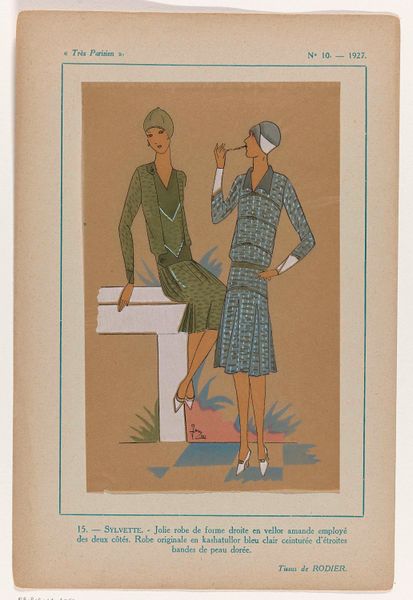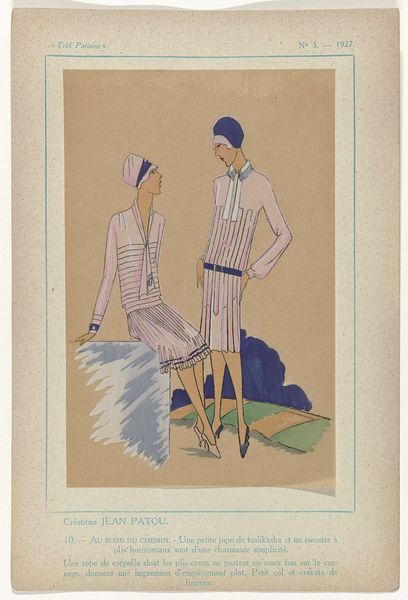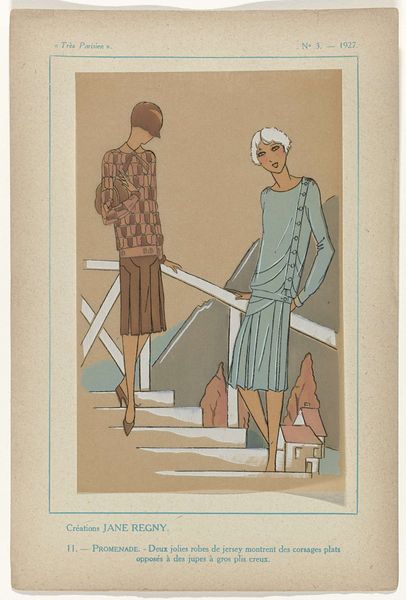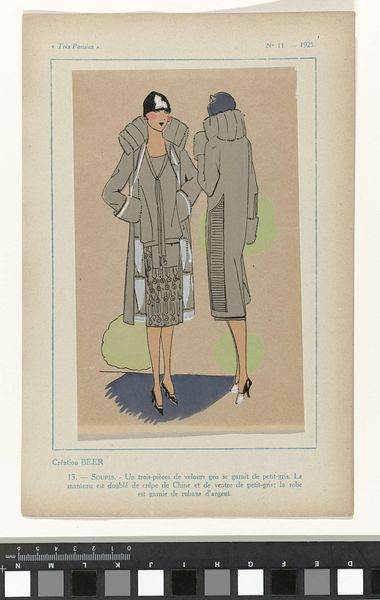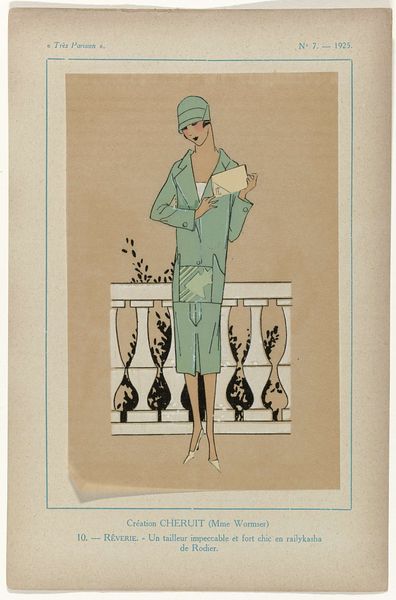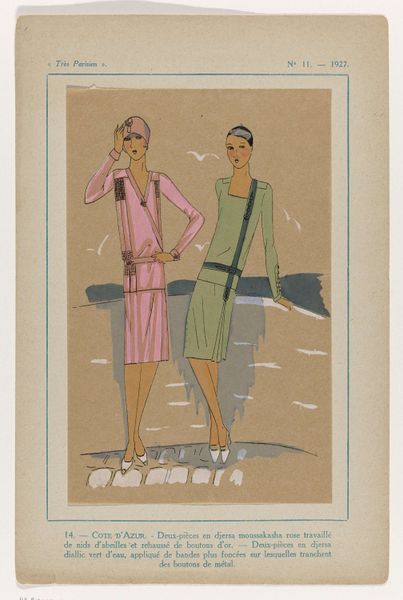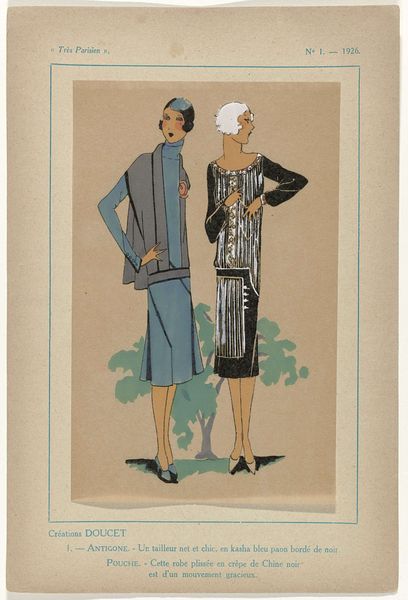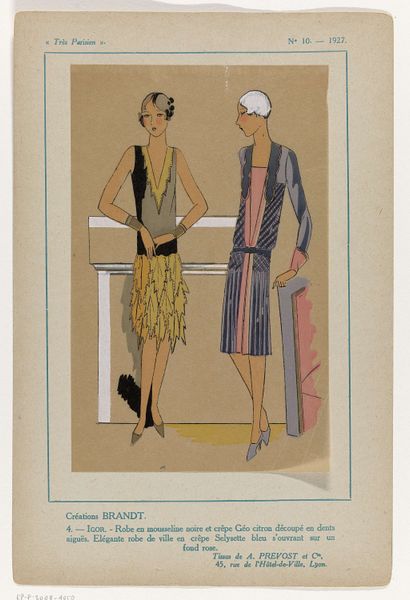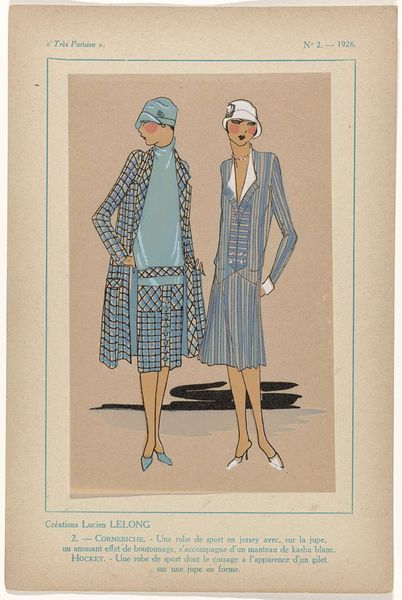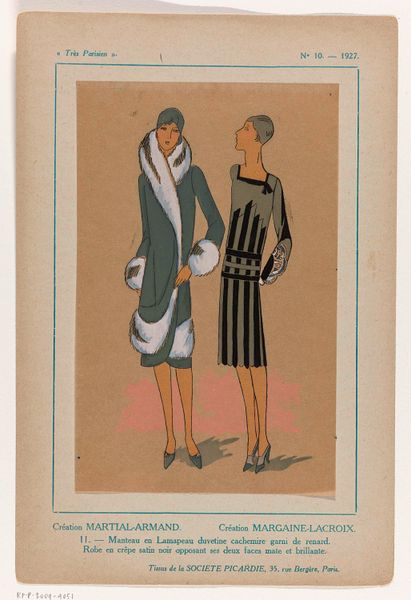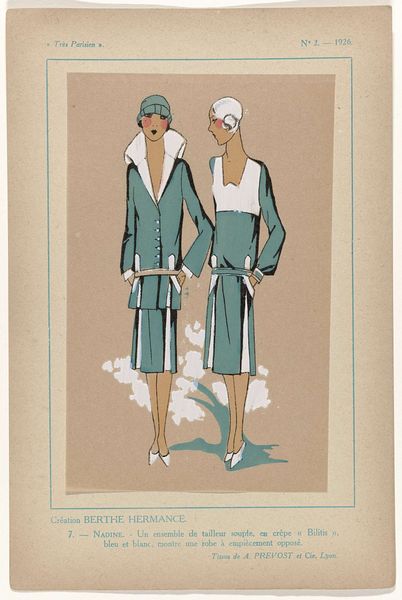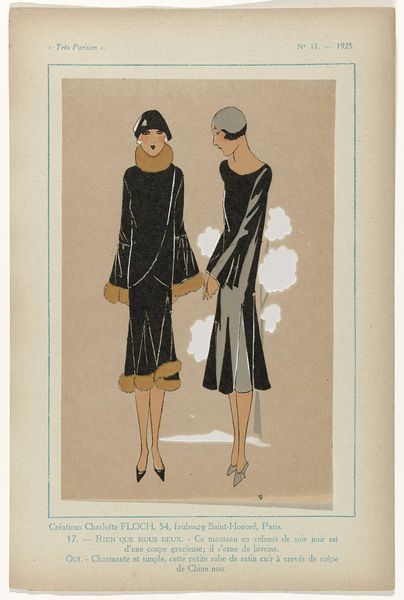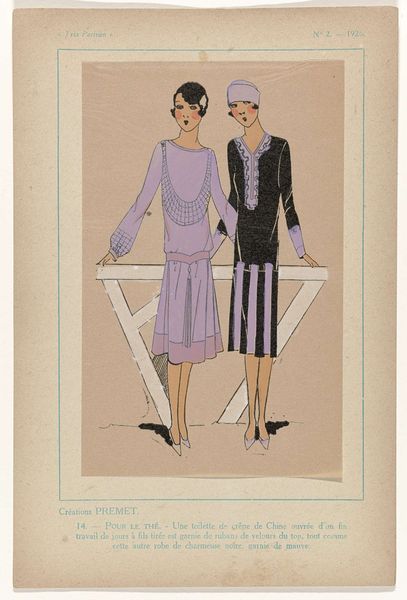
drawing, watercolor
#
art-deco
#
drawing
#
caricature
#
watercolor
#
watercolour illustration
Dimensions: height 195 mm, width 120 mm, mm
Copyright: Rijks Museum: Open Domain
Curator: Ah, "Très Parisien, 1926, No. 2, Pl. 4: Créations PREMET - ALGER" by J. Dory. It's a drawing, watercolor, a lovely example of Art Deco. Editor: It is striking! I am immediately drawn to its simplicity and that soft, powdery blue. What catches your eye about this illustration? Curator: It's more than just an illustration; it's a window into a very specific moment. Consider the socio-political context. World War I had ended, and there was a sense of liberation and modernity. Women's roles were changing; they were gaining more freedom and agency, reflected in the streamlined silhouettes and travel. It’s a post-war visual declaration. How do you interpret the women’s garments in this context? Editor: I see what you mean. The looser shapes seem to signal less constraint compared to what came before. Curator: Exactly. And the title includes “Alger,” which alludes to the rising interest in global cultures. Art Deco often incorporated exoticized motifs. It’s not simply about style; it's intertwined with colonialism and the romanticization of other cultures, creating a dialogue between Paris and the world. Do you see any echoes of that interplay in the color palette? Editor: The contrast between the blue and beige suggests something of that tension. I never would have considered the colonial implications here. Thanks for this. Curator: The power of art history is unveiling how social narratives shape aesthetic choices! It certainly reshapes our appreciation, doesn't it?
Comments
No comments
Be the first to comment and join the conversation on the ultimate creative platform.
